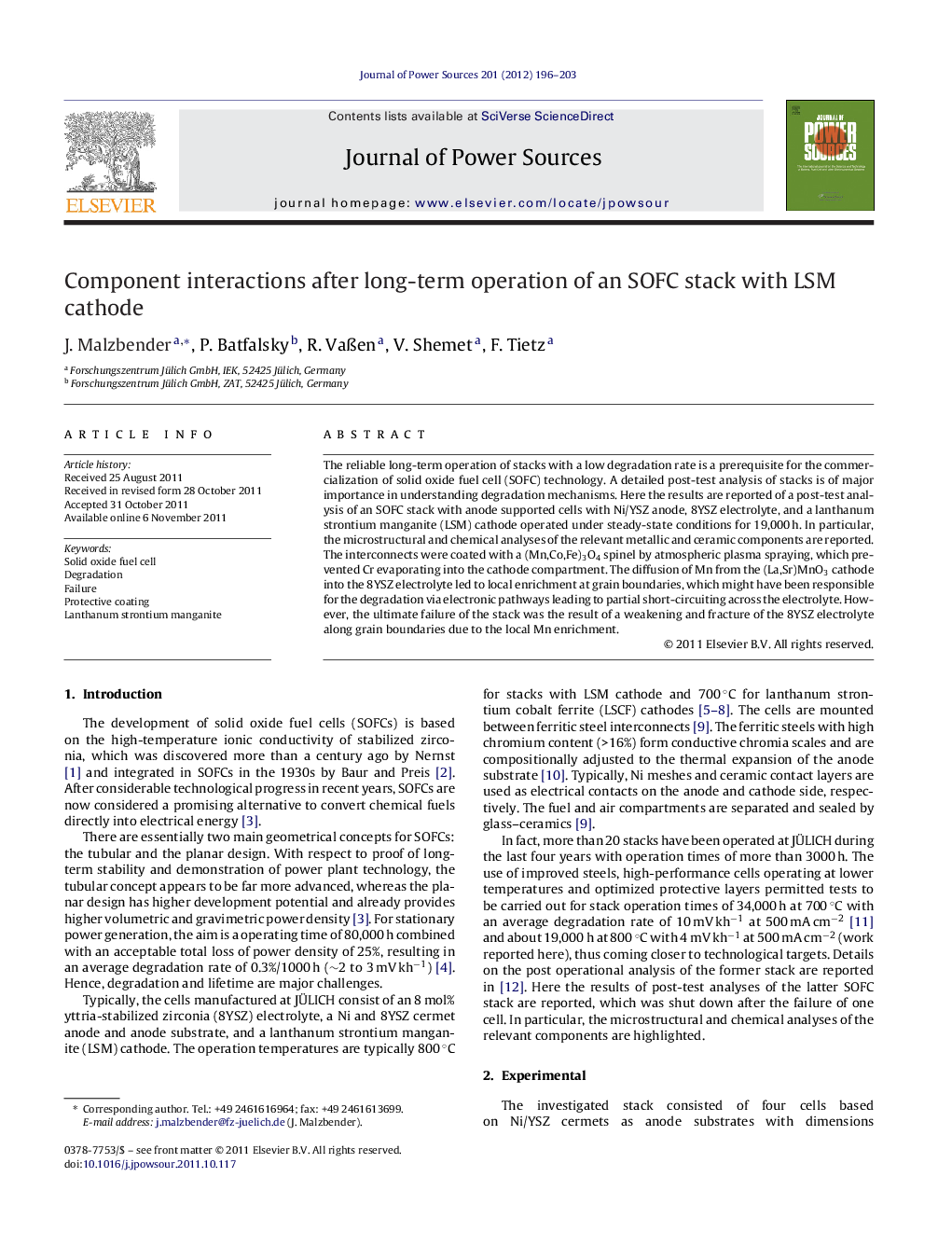| Article ID | Journal | Published Year | Pages | File Type |
|---|---|---|---|---|
| 1293191 | Journal of Power Sources | 2012 | 8 Pages |
The reliable long-term operation of stacks with a low degradation rate is a prerequisite for the commercialization of solid oxide fuel cell (SOFC) technology. A detailed post-test analysis of stacks is of major importance in understanding degradation mechanisms. Here the results are reported of a post-test analysis of an SOFC stack with anode supported cells with Ni/YSZ anode, 8YSZ electrolyte, and a lanthanum strontium manganite (LSM) cathode operated under steady-state conditions for 19,000 h. In particular, the microstructural and chemical analyses of the relevant metallic and ceramic components are reported. The interconnects were coated with a (Mn,Co,Fe)3O4 spinel by atmospheric plasma spraying, which prevented Cr evaporating into the cathode compartment. The diffusion of Mn from the (La,Sr)MnO3 cathode into the 8YSZ electrolyte led to local enrichment at grain boundaries, which might have been responsible for the degradation via electronic pathways leading to partial short-circuiting across the electrolyte. However, the ultimate failure of the stack was the result of a weakening and fracture of the 8YSZ electrolyte along grain boundaries due to the local Mn enrichment.
► A detailed post-test analysis of SOFC stack operated under steady-state conditions for 19,000 h. ► Atmospheric plasma sprayed protective spinel coating prevents Cr evaporation. ► Mn enrichment and associated electrolyte grain boundary fracture.
